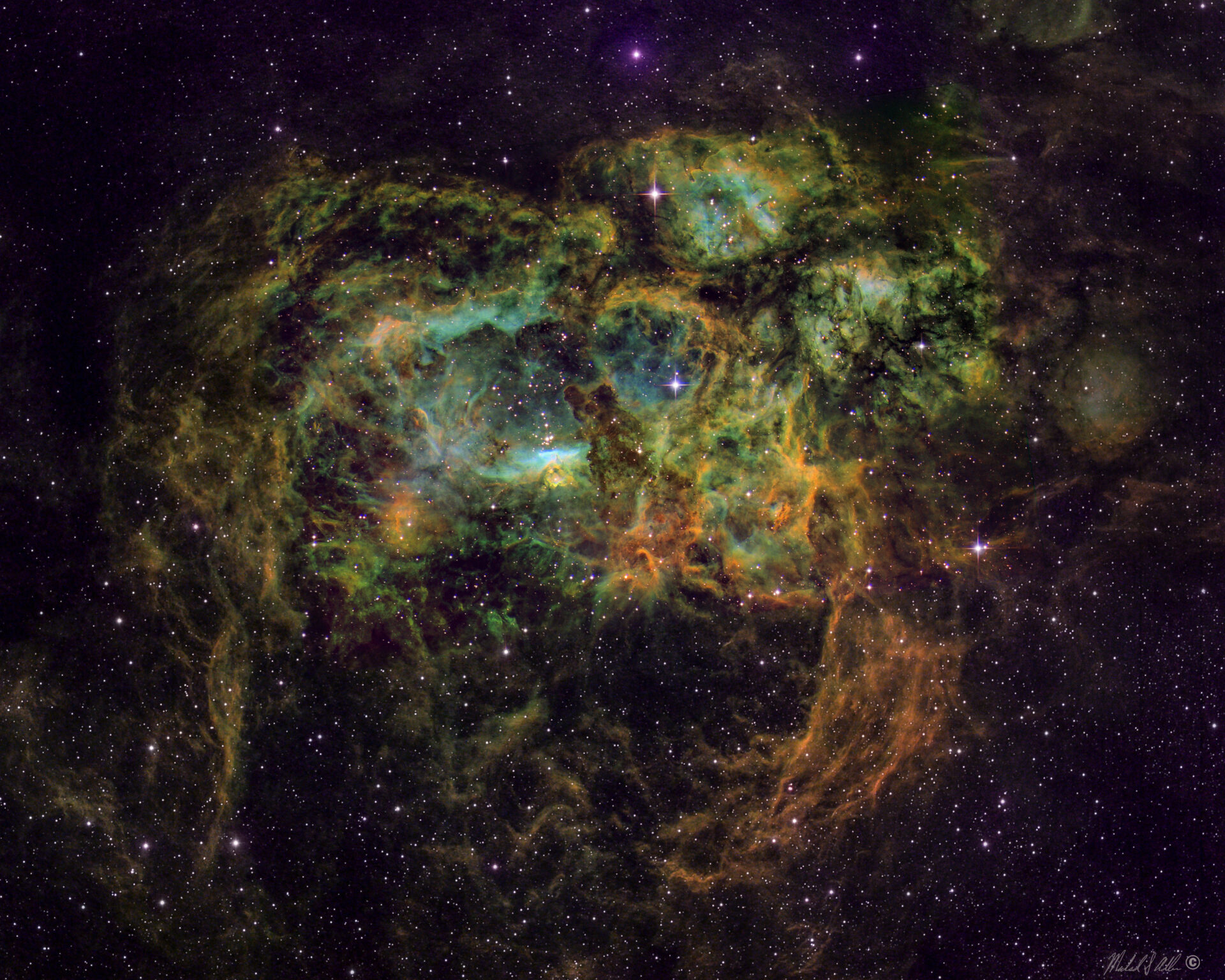Optics: Planewave 17″ CDK17, Astro Physics RH305
Mount: Software Bisque Paramount ME
Camera: SBIG STXL 11002, SBIG STXL 16200
Filters: Astrodon 3nm Ha, Oiii, Siii, LRGB
Dates/Times: July, 2019
Location: Rio Hurtado Chile, South Wales Australia
Exposure Details: CDK17,Ha 13x30min,Oiii=21x30min, Sii=23x30min, RGB=3x10min, L=9x20min, total 75 images over 33 hours,
RH305 Ha,Oiii,Sii=10x30min, total 30images over 15 hours, overall total 105 images, 48 hours
Acquisition: MaxIm DL
Processing: MaxIm DL,Starnet++ Photoshop CC202, Both images were created by first making a synthetic luminance and then a color image in the Hubble palette. The stars were removed from the color images and then blended with the synthetic luminance in Photoshop. The RH305 image was then brought to the scale of the CDK17 image and the two were combined with the CDK17 image replacing the center portion of the RH305 image.
Lobster Nebula, NGC 6357 (Wide Field) (Copy)
Original price was: $65.00.$52.50Current price is: $52.50.
The Lobster Nebula NGC 6357 The Lobster Nebula is forming some of the most massive stars known. Cataloged as NGC 6357, the Lobster Nebula houses the open star cluster Pismis 24 near its center — a home to unusually bright and massive stars thought to have formed from a massive molecular cloud. The overall blue glow near the inner star forming region results from the emission of Oxygen gas gas. The surrounding nebula holds a complex tapestry of gas, dark dust, stars still forming, and newly born stars. The intricate patterns are caused by complex interactions between interstellar winds, radiation pressure, and magnetic fields, and gravity. NGC 6357 spans about 400 light years and lies about 8,000 light years away toward the constellation of the Scorpion in the southern sky. While called the lobster nebula it appears to look more like a turtle in this image. The dramatic false color image highlights the contributions of hydrogen, sulfur, and oxygen, energized by intense ultraviolet radiation from the nearby stars, to the glow of the nebula. Green in the image come from Hydrogen gas, red come from Sulfur and blue comes from Oxygen. The image was taken in Rio Hurtado, Chile and South Wales Australia. The wider field image was taken in Australia using an Astro Physics RH305 telescope and the center portion was taken in Chile using the CDK17 telescope. It consists of 105 images taken over a total of 48 hours. The images were done by making a synthetic luminance from the narrowband images and then blending in the color from each using the color blending mode in Photoshop CC2020. The CDK17 image and the RH305 images were combined at the scale of the CDK17 image to form the final composite image.


